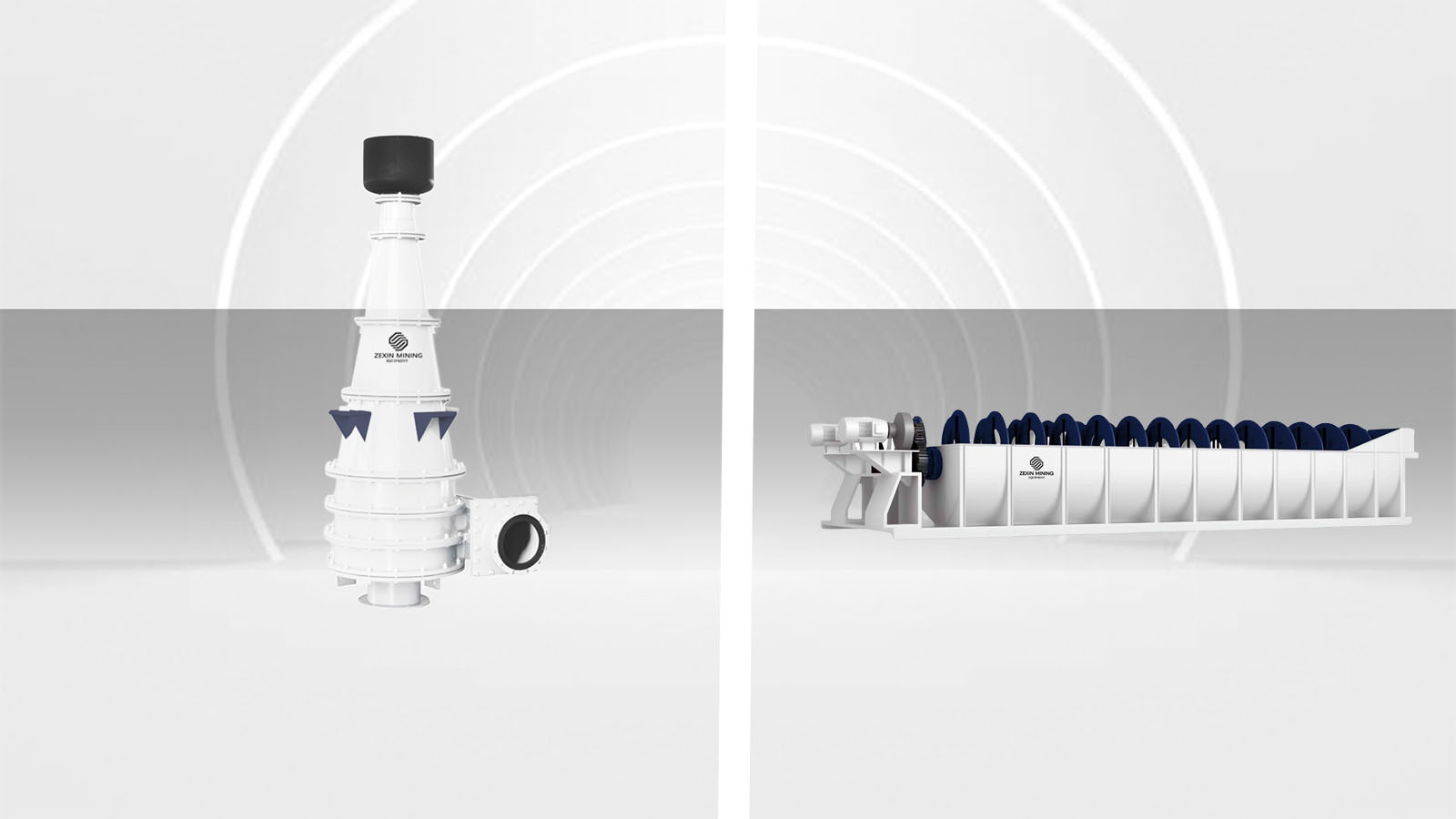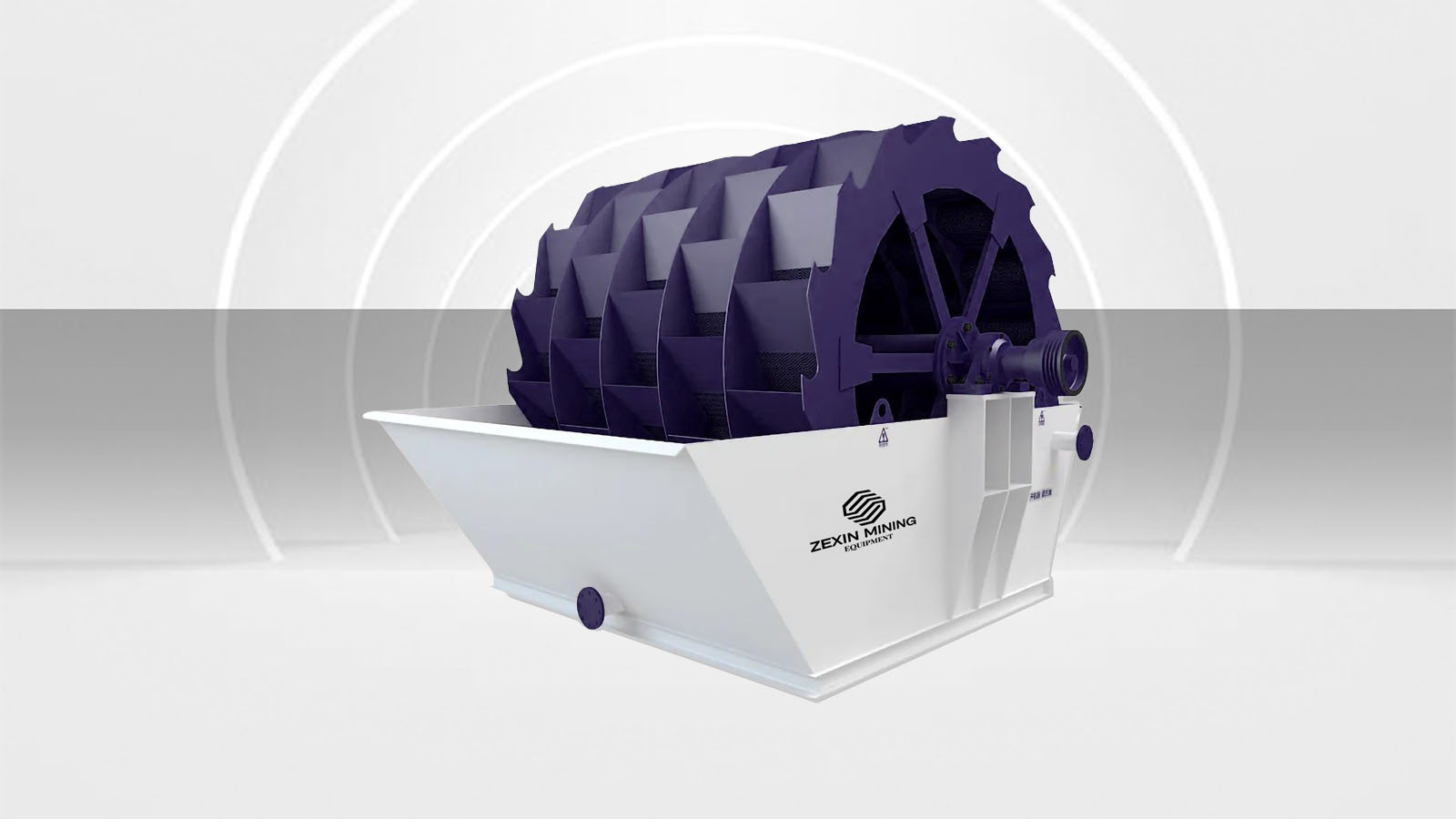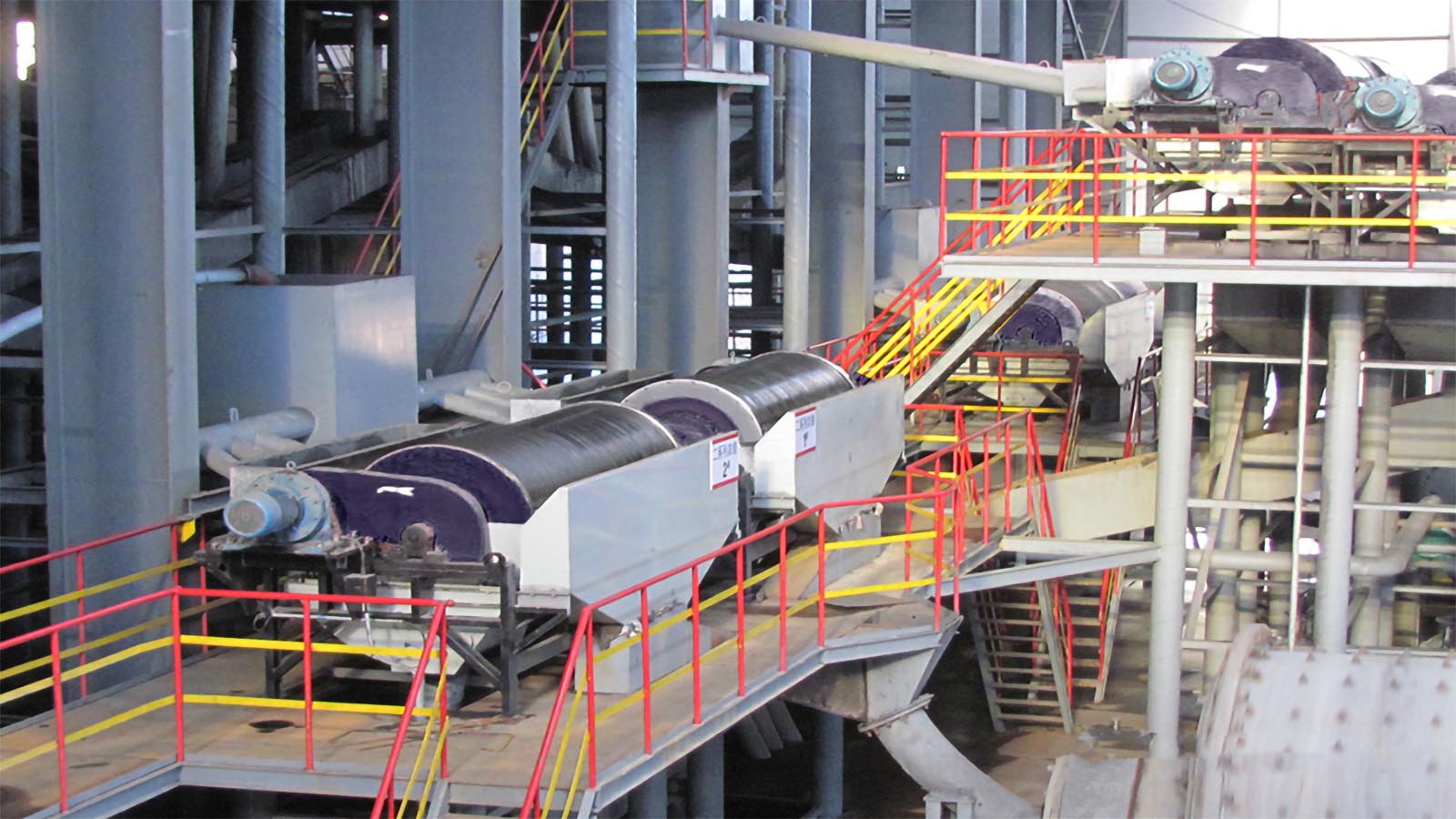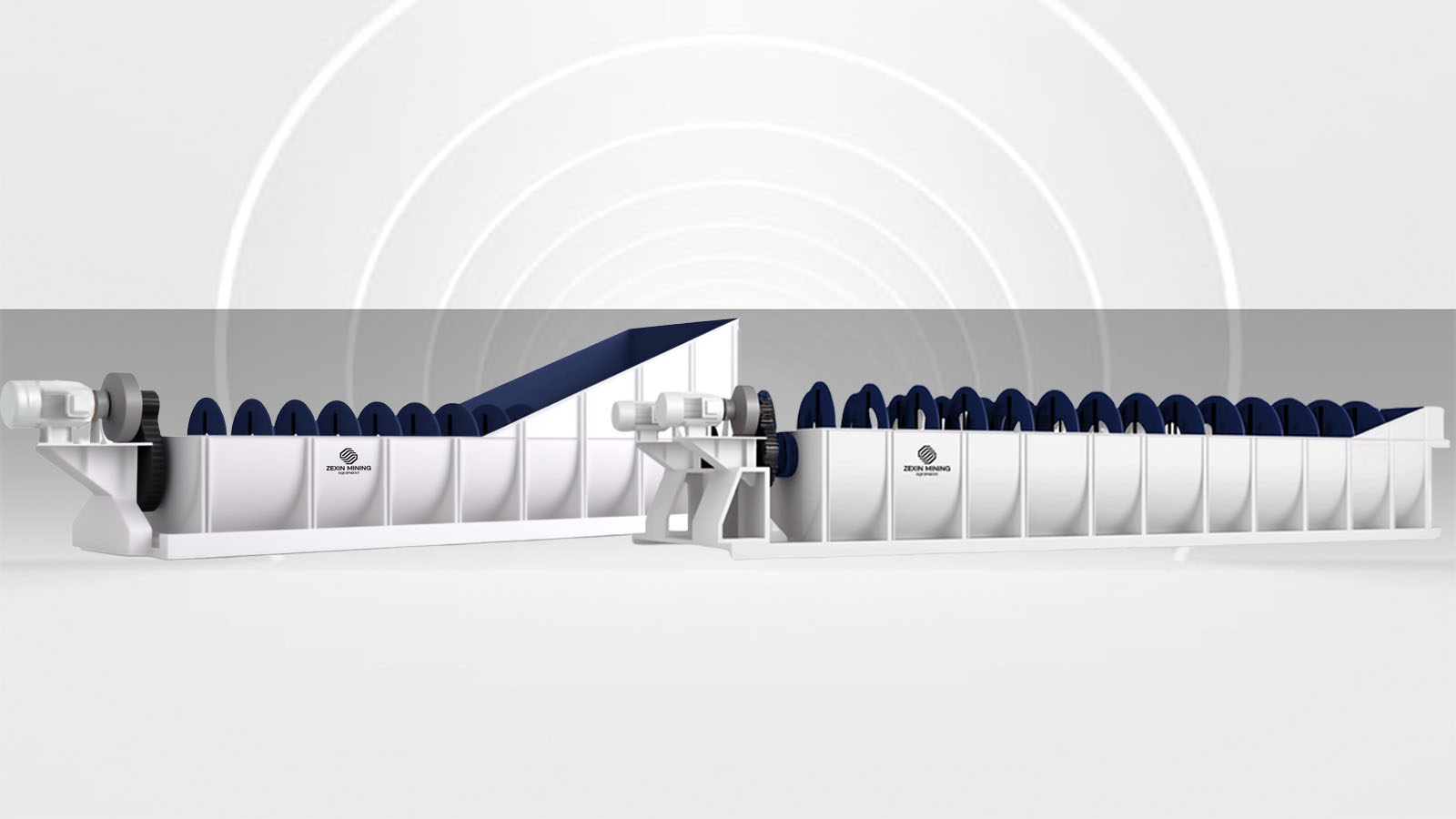
In modern mineral processing, classification serves as a critical link between crushing and separation, with equipment selection directly impacting the entire production line's efficiency and economics. The classification process effectively separates coarse and fine particles, preventing unnecessary energy waste from over-grinding fine materials while ensuring coarse particles return to the mill for adequate grinding. Currently, spiral classifiers and hydrocyclones represent two generations of mainstream classification equipment, each with distinct characteristics suitable for different operating conditions. This article provides a professional comparison of these two types of equipment across five key dimensions to help mining enterprises make optimal selection decisions.
Classification Particle Size Range Comparison
The primary consideration for classification equipment is its applicable material particle size range, which directly determines the equipment's application scenarios.
1. Spiral Classifier Application RangeSpiral classifiers can be divided into two typical types based on structure:
- High Weir Classifiers: Primarily used for processing coarser particles, with overflow product sizes typically greater than 0.15mm, suitable for primary classification operations
- Submerged Classifiers: Focused on fine particle classification, with overflow product sizes generally less than 0.15mm, applicable for precise classification requirements
2. Hydrocyclone Application RangeHydrocyclones demonstrate excellent performance in fine particle processing thanks to their special centrifugal separation principle:
- Wide Particle Size Coverage: Separation particle size range typically between 0.3-0.01mm, particularly efficient in ultra-fine classification
- Significant Advantage in Fine Particle Classification: When classification size requirements reach below 0.037mm, hydrocyclones demonstrate significantly higher classification efficiency than other equipment
Space Utilization Efficiency Analysis
Equipment footprint is an important consideration in concentrator design, especially for renovation projects or space-constrained new projects.
1. Equipment Space Requirements ComparisonThe two types of equipment show significant differences in space utilization efficiency:
- Hydrocyclone Space Advantage: Compact structure, vertical installation, occupying only 1/30 to 1/50 of the space required by spiral classifiers, substantially saving plant space
- Spiral Classifier Space Limitations: Due to its horizontal spiral structure, requires larger linear space with higher plant layout requirements
Classification Efficiency and Precision Assessment
Classification efficiency and product quality are core indicators for measuring equipment performance, directly affecting subsequent separation process results.
1. Classification Precision AnalysisUnder normal operating conditions:
- Spiral Classifier Advantages: Smoother classification curve, more uniform product particle size distribution, less over-grinding, particularly stable when processing certain special minerals
- Hydrocyclone Characteristics: Significant effect on ultra-fine classification under appropriate pressure and concentration conditions, but more susceptible to operating condition influences
2. Process AdaptabilityPerformance under different process conditions:
- Spiral Classifier Stability: Through slow spiral rotation, provides uniform slurry mixing, making the classification process less susceptible to feed fluctuations
- Hydrocyclone Sensitivity: When feed pressure is unstable, classification effect fluctuations may occur, requiring precise feed condition control
Operation and Maintenance Complexity Comparison
Equipment operability and maintenance requirements directly relate to production continuity and human resource allocation.
1. Operational ComplexityThe two types of equipment show obvious differences in operational requirements:
- Spiral Classifier Simplicity: Simple and clear structure, fewer operating parameters, lower skill requirements for operators, short training period sufficient for mastery
- Hydrocyclone Precision Requirements: Needs control of multiple parameters including feed pressure and concentration, higher technical level requirements for operators
2. Maintenance RequirementsMaintenance cycles and difficulty significantly impact production continuity:
- Spiral Classifier Maintenance Focus: Primarily on periodic inspection and replacement of spiral blade liners, concentrated maintenance items but higher component costs
- Hydrocyclone Wear Points: Inner lining and overflow pipes are the main wear parts, with service life greatly influenced by material properties, requiring maintenance plans based on actual operating conditions
Investment and Operating Cost Assessment
Economic considerations are important factors in equipment selection, including initial investment and long-term operating costs.
1. Initial Investment ComparisonOverall investment in equipment procurement and installation:
- Equipment Base Cost: Hydrocyclone unit price significantly lower than spiral classifiers, but requires supporting pressure pumps, distributors, and other auxiliary equipment
- Installation Cost: Spiral classifiers require larger installation projects with higher foundation requirements; hydrocyclones feature simpler installation with shorter construction periods
2. Operating Cost AnalysisEconomic considerations in long-term operation:
- Energy Consumption Comparison: Spiral classifiers have relatively stable energy consumption; hydrocyclones require higher pump energy consumption to maintain certain pressure
- Spare Parts Cost: Spiral classifier liner replacement costs are high but frequency is low; hydrocyclone inner lining replacement frequency is higher but single replacement cost is lower
Based on the analysis of the above five dimensions, we can see that spiral classifiers and hydrocyclones each have their advantages. In the actual selection process, comprehensive assessment should be based on multiple factors including ore properties, capacity requirements, plant conditions, personnel skill levels, and investment budget. The Zexin Mining technical team recommends that concentrators should not pursue single indicators one-sidedly when selecting equipment, but rather seek the overall solution that best suits their process requirements to achieve optimal balance between production efficiency and economic benefits.
Related News

Innovative Applications and Efficiency Analysis of Washing Equipment in Clay Mineral Processing

Advanced Iron Ore Processing: Comprehensive Analysis of Four Major Magnetic Separator Types
